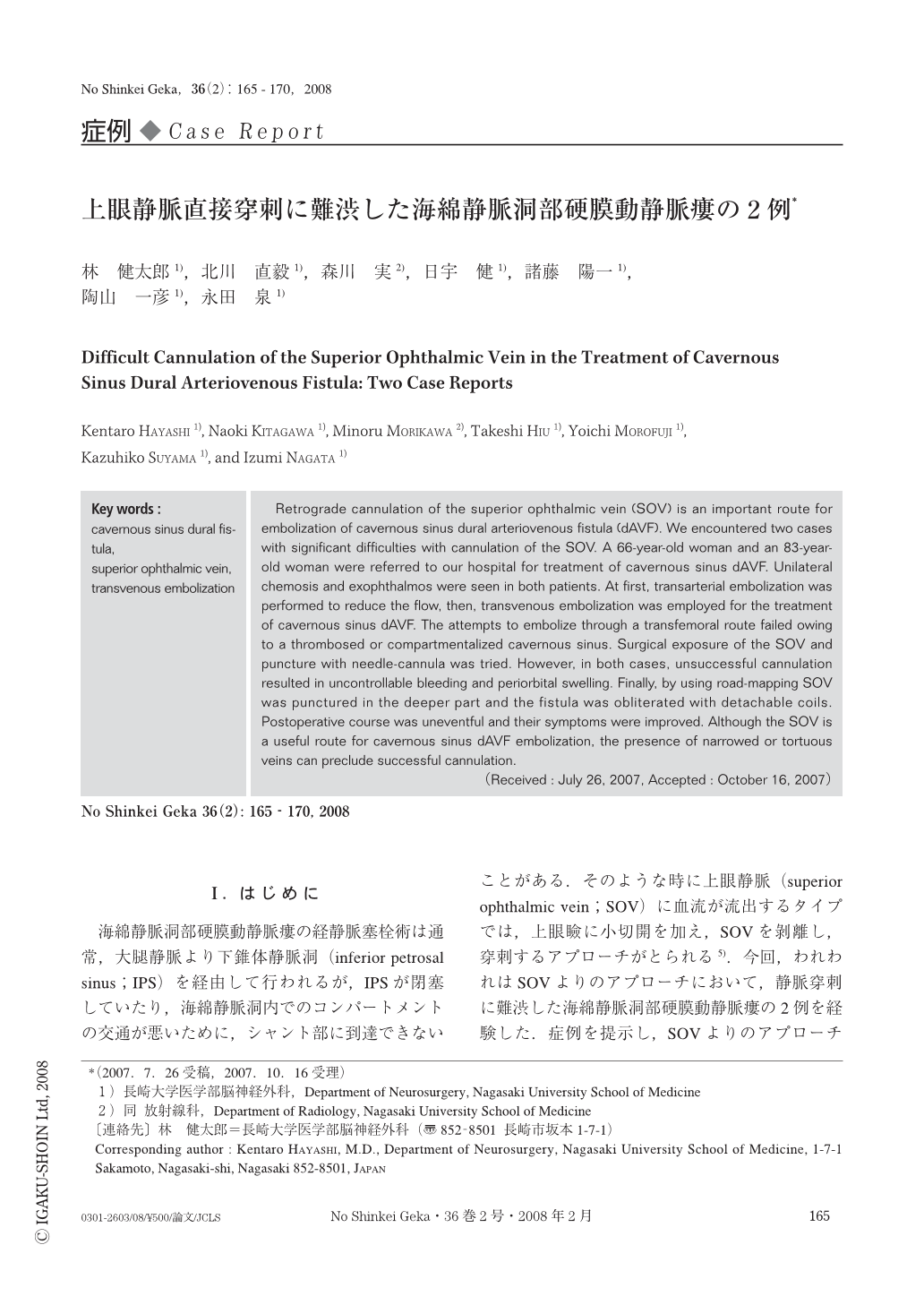Japanese
English
- 有料閲覧
- Abstract 文献概要
- 1ページ目 Look Inside
- 参考文献 Reference
Ⅰ.はじめに
海綿静脈洞部硬膜動静脈瘻の経静脈塞栓術は通常,大腿静脈より下錐体静脈洞(inferior petrosal sinus;IPS)を経由して行われるが,IPSが閉塞していたり,海綿静脈洞内でのコンパートメントの交通が悪いために,シャント部に到達できないことがある.そのような時に上眼静脈(superior ophthalmic vein;SOV)に血流が流出するタイプでは,上眼瞼に小切開を加え,SOVを剥離し,穿刺するアプローチがとられる5).今回,われわれはSOVよりのアプローチにおいて,静脈穿刺に難渋した海綿静脈洞部硬膜動静脈瘻の2例を経験した.症例を提示し,SOVよりのアプローチに関して検討する.
Retrograde cannulation of the superior ophthalmic vein (SOV) is an important route for embolization of cavernous sinus dural arteriovenous fistula (dAVF). We encountered two cases with significant difficulties with cannulation of the SOV. A 66-year-old woman and an 83-year-old woman were referred to our hospital for treatment of cavernous sinus dAVF. Unilateral chemosis and exophthalmos were seen in both patients. At first, transarterial embolization was performed to reduce the flow, then, transvenous embolization was employed for the treatment of cavernous sinus dAVF. The attempts to embolize through a transfemoral route failed owing to a thrombosed or compartmentalized cavernous sinus. Surgical exposure of the SOV and puncture with needle-cannula was tried. However, in both cases, unsuccessful cannulation resulted in uncontrollable bleeding and periorbital swelling. Finally, by using road-mapping SOV was punctured in the deeper part and the fistula was obliterated with detachable coils. Postoperative course was uneventful and their symptoms were improved. Although the SOV is a useful route for cavernous sinus dAVF embolization, the presence of narrowed or tortuous veins can preclude successful cannulation.

Copyright © 2008, Igaku-Shoin Ltd. All rights reserved.


